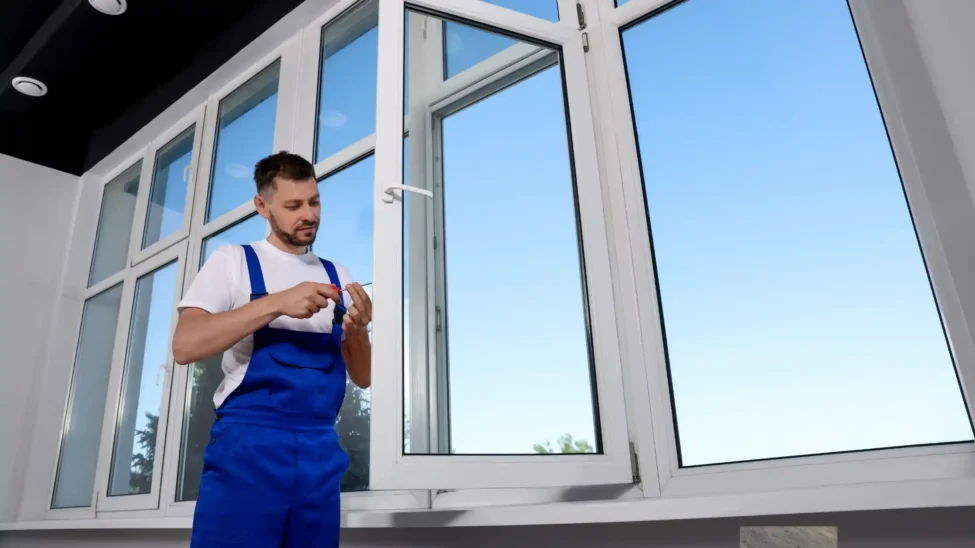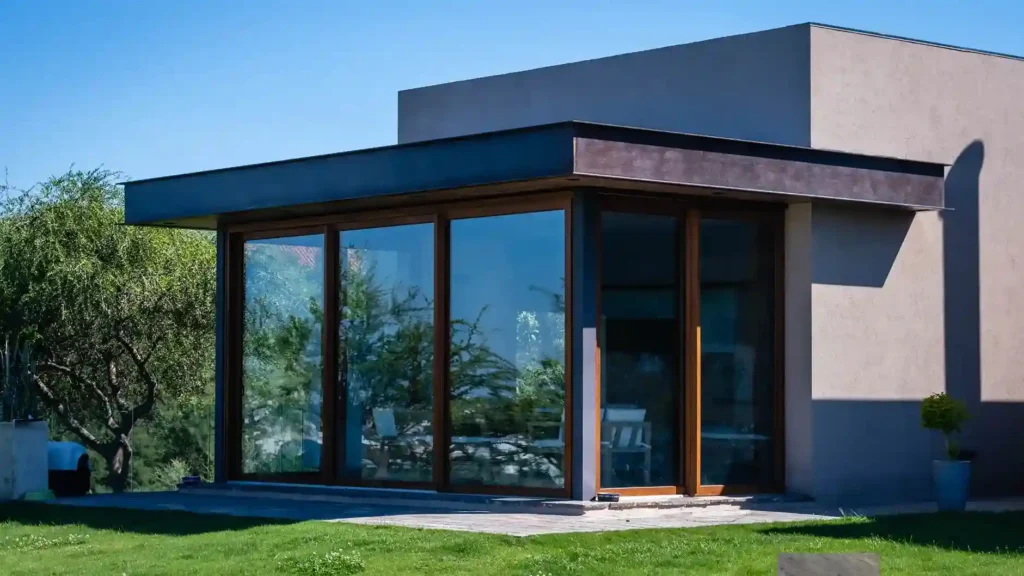
Types of Glass Used in Construction: A Comprehensive Guide
Glass has become the most important construction material in today’s world because it is aesthetic and functional at the same time. From window panes to facades, the types of glass used in construction will depend on how it is used, the effects desired, or the needs of the building itself. Whether your project is in renovating a house or creating a commercial, knowing the difference between the several types of glasses and their application will help make the right choices for the selection of materials used.
What is building glass?
Building glass refers to any types of glass used in construction of a building, providing for both aesthetic and functional effects. Glass maximizes natural light even as it adds beauty to architecture. Indeed, it plays an important role in energy efficiency, safety, and even acoustics. The variety of glass thus allows architects and builders to select the most appropriate glass for each part of the building.
For more info, visit WA Special Projects.
Glass Types and Uses in Construction
The various types of glass used in construction have several advantages. The following are some of the most common types of glass and their particular usages in construction:
1. Float Glass
Float glass is the most common one used in construction. These are made as molten metal floats on a molten metal base, hence appearing smooth and identical in thickness across the surface of the glass sheet. The sheets are clear glass, relatively affordable, and they are extensively utilised for creating windows and a glass façade for buildings with mirrors. Therefore, this makes it suitable if clarity and non-obstruction sight are desired.
2. Tempered Glass
Tempered glass is heat-treated glass that is stronger than regular glass. It has been processed to resist breaking and, in case it breaks, it breaks into small pieces that are not sharp, thereby making the chances of injury low. This property makes tempered glass suitable for applications such as building windows in areas with high traffic, shower doors, and glass railings. It is mostly used where additional strength is required.
3. Laminated Glass
Laminated glass consists of two or more layers of glass, stuck together using a plastic interlayer, like PVB. It is fairly robust and even sturdy in this build. This laminated glass, if it happens to be broken, will stay on the interlayer since it tends to cling together as not to spread shards that might prove dangerous. Laminated glass is used for building window glass, skylights, and glass facades because it gives an additional protection and noise control.
4. Insulated Glass
Insulated glass consists of two or more layers of glass separated by an insulating air space. It is excellent at thermal insulation: it controls temperature inside a building by reducing the transfer of heat. Insulated glass is the most common variety used in windows and glass doors to improve the energy efficiency level. It aids in lowering the heating and cooling costs and makes the indoor space comfortable.
5. Low-E Glass (Low Emissivity Glass)
Low-E glass is coated with a special layer that reflects infrared light but allows visible light to pass through. It helps in keeping less heat from entering or leaving the building, which makes it energy-efficient. It is very useful in extreme temperatures because it keeps the interior cool in summer and warm in winter. It is used in residential and commercial buildings for building windows.
6. Smart Glass
Smart glass is the latest invention in which glass changes its transparency by applying some amount of electrical charge on it. The glass could turn from transparent to frosted; thus, this type of glass can give the privacy of an individual’s place on demand. Smart glass is used in offices, conference rooms, and even homes as it can be used as a window or partition subject to the requirements of having privacy or sunlight. This is an innovative approach to save energy and augment comfort.
7. Decorative Glass
Basically, this type of glass is used as decoration. It can be colored, etched, frosted, or even given some pattern so that it will give some interest in the entire aspect of the building. Decorative glass is widely used in windows, doors, and partitions where the outlook of the design is relevant. Such glass, however, has functional qualities like privacy and light diffusion.
To read more about glass types and their uses, visit The Constructer.
How Many Types of Glass Are There?
When you look at the numbers of types of glass that are used in construction, the number is very broad. The groups above represent some of the more common varieties, but there are also other special types, such as:
- Fire-resistant glass used for fire-rated doors and windows.
- Reflective glass used for reducing solar heat gain and glare, usually for high-rise applications.
- Acoustic glass, where noise is minimized in noisier locations.
The diversity of available glass ensures the construction professional gets the best answer for any one particular need-the safety, aesthetically satisfying, or even energy-efficient.
Types of Glazing
Glazing basically means the placing of glass inside the frames and describes the specialized glass used to form windows as well as to form facades. The classification of glazing is as given below:
- Single Glazing: It is one panes of glass, which is often used in less extreme climatic conditions but lacks energy efficiency.
- Double Glazing: Two layers of glass with an air gap in between, offering a better layer of insulation and energy efficiency.
- Triple Glazing: It is three layers of glass with air gaps between each and offers superior insulation for extreme climatic conditions.
- Fire Glazing: Glass that is designed to resists the spread of fire, which is often used in fire-rated windows and doors.
- Acoustic Glazing: Specialized glazing that reduces noise transmission, ideal for areas with high noise levels.
Best Glass for Windows
With several factors of the climate, energy efficiency, and safety, choosing the best glass for windows depends on quite a few things. For the purposes of energy saving, Low-E glass and insulated glass can be used. Safety features in a building require the presence of tempered glass. And laminated glass is appropriate for strength plus noise reduction. The best glass for windows, therefore, depends on what your needs are and what the nature of the building may be.
Utilizations of Glass in Construction
Utilizations of glass in construction are numerous and different, among them include the following:
- Window: Glass use in the most common place which is windows.
- Facades: Facades is an important mark in modern architectures whereby it helps maximize daylight using transparent exterior sides
- Skylights: Use glass in roof top systems where by light reaches into the inner portion of the house.
- Glass Walls/Partitions: Glass is used to make partition walls which are open and lit but also private.
- Staircases and Floors: Glass can be applied in staircases or flooring to give a modern look that is transparent.
FAQs
What is the difference between tempered glass and laminated glass?
Tempered glass is stronger and more resistant to impact, but when it breaks, it shatters into small, safe pieces. Laminated glass, on the other hand, consists of layers of glass with a plastic interlayer, which prevents the glass from shattering into sharp pieces, providing added security.
Is Low-E glass worth the investment?
Yes, Low-E glass is an excellent investment for improving energy efficiency in both residential and commercial buildings. It reduces heat gain and loss, helps to maintain a comfortable temperature, and lowers energy costs.
Can smart glass be used for windows?
Yes, it can be used in windows and other glazing applications. You can control the transparency of the glass at the touch of a button to give you privacy and light control. It is very helpful in modern offices and residential spaces where privacy and light control are essential.
Conclusion
A large part of determining whether your constructions will look both aesthetically pleasing and effective is to decide on the proper glass. For example, different types of glasses are designed and used in making building window glasses, decorative glass, and even smart glass, therefore offering the maximum possibilities of getting energy-efficient and safe, with visually beautiful structures. You’re just upgrading windows, or designing the modern glass façade of buildings, the determination of types of glass and usage will enable the best selection.




